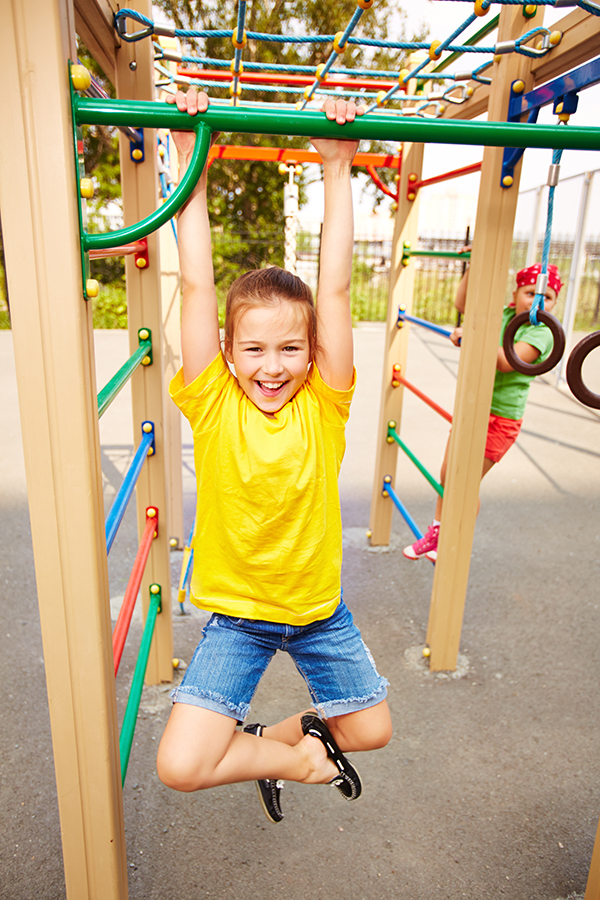OCCUPATIONAL THERAPY IN BRYANSTON
What is Occupational Therapy ?
We first assess children in order to establish what difficulties or delays in development they have. We then set specific goals of treatment and a treatment plan to address areas of concern.
We use play, games, puzzles, exercises, obstacle courses, arts & crafts, various equipment as well as academic and other activities in our treatment sessions to achieve our therapy goals. This makes it fun and motivating for children. When treating children we work on establishing the building blocks of success from the bottom up. If skills are developed in isolation and not in the natural developmental sequence, children develop splinter skills. Splinter skills are skills that are not backed up with understanding or ability and therefore have no foundations. Children who develop splinter skills tend struggle later on when application is required.
So we first work on sensory skills (interpretation of the quality of the sensory input received by the body and the ability to process and modulate this information)
- Tactile
- Oral
- Proprioception (provides the brain with information as to the position of the body in space)
- Vestibular (gives the brain information about the position of the head in space, monitors movement and is important for the development of the automatic postural system)
- Visual
- Auditory Abilities
- Muscle tone
- Balance
- Eye movements
- Reflexes
We then move onto:
- Body Awareness
- Bilateral integration (performance in tasks that require the use of both sides of the body)
- Motor planning
- Emotional / Social Skills
- Gross Motor Skills
- Fine motor Skills
We then work on:
- Visual Perceptual Skills
Once the child’s interpretation of input has improved we can move onto reading, handwriting and other academic skills.
Occupational Therapy Referral Checklist

Gross Motor (Upper Body Strength, muscle tone, trunk stability):
- Slumps in chair
- Holds head up with hand
- Fidgety in chair
- Leans on things when standing
- Tires easily (fatigues before peers, difficulty finishing assignments)
- Muscles seem tight and rigid
- Muscles seem weak and floppy
- Low Endurance
- Difficulty with hopping, skipping, running, compared to same age peers
- Clumsy or seems to not know how to move body; bumps into things
- Tendency to confuse left and right body sides (after age 6)
- Falls frequently
- Reluctant to participate in sports or physical activity
Fine Motor (grasp patterns, hand/wrist strength,
in-hand manipulation):
- Awkward grasp on pencil/scissors
- Writing pressure too light/too heavy
- Drops things easily
- Flexes wrist when writing/cutting
- Experiences hand fatigue/pain
- Poor isolation on fingers on keyboard
- Writing not fluid
- Tries to avoid drawing, colouring, cutting, or writing
- Non-dominant hand fails to hold paper stable when writing/colouring
- Shows inconsistent hand dominance if older than age 6 years
- Difficulty manipulating fasteners
- Written assignments illegible (spacing, letter height)
- Immature/ awkward scissors grasp
- Difficulty with keyboarding skills
Body perception & Visual perception:
- Visual motor integration, Eye-hand coordination, Visual focus and tracking
- Poor letter recognition
- Poor letter formation / word spacing/ alignment
- Inaccurate or slow copying/ reading
- Difficulty completing reading/writing (loses place, omits words, add words)
- Poorly organised writing
- Can not think of what to write about
- Poor drawing skills
- Unable to accurately draw a person
- Letter/ word reversals (past 1st grade)
- Difficulty colouring within boundaries
- Difficulty staying on lines with cutting
- Confuses right/ left(past 6 years)
- Poor alignment of numbers in maths
- Poor memory for written directions
- Poor spelling or reading skills
- Moves head back and forth while reading
- Eye watering/ rubbing/ squinting/ head close to paper
- Poor eye-hand coordination
- Does not recognise or fix own errors well
- Difficulty with mazes and/ or dot-to-dots
- Difficulty copying designs with 3D objects or on paper
- Difficulty copying from the board or book
- Looses place on page (reading or writing)
Sensory Integration (touch, visual processing, auditory processing, movement, body awareness):
- Avoids or has difficulty with eye contact
- Is easily distracted by visual stimulation
- Seems not to understand what was said
- Seems overly sensitive to sounds
- Appear reluctant to participate in sports
- Distracted by lots of noise and games
- Unable to follow 2-3 directions
- Prefers to touch rather than be touched
- Often seems overly active
- Avoids getting hands messy
- Hits or pushes other children
- Seems more sensitive to pain than others
- Oblivious to bruises/ heavy falls
- Complains that others hit/ push him/ her
- Mouths clothing/ objects frequently
- Difficulty making friends
- Tends to prefer to play alone
- Distressed by change in routine
- Has strong outbursts of anger/frustration
- Lacks carefulness/ Impulsive
- Bumps into things frequently
- Moves in/ out of chair while working
- Falls out of chair
- Seems clumsy
- Seems to deliberately fall or tumble
- Distracted by background noises
- Fearful moving through space
- Avoids activities that challenge balance
- Avoids playing on playground equipment
- Extremely picky eater; often refuses foods kids typically eat at school
- Behaviour, social and emotional difficulties


